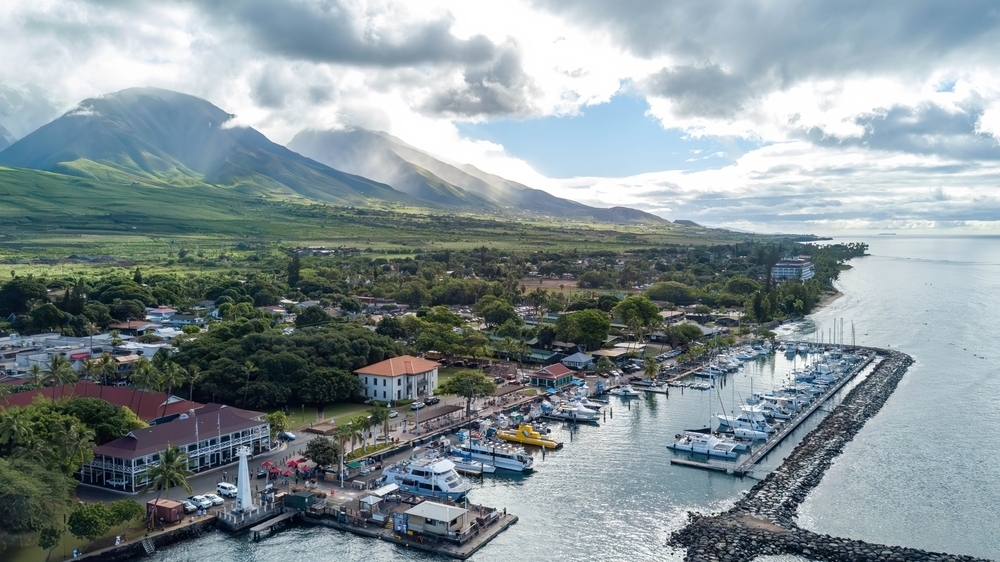On August 8, wildfires destroyed Lahaina on the Hawai’ian island of Maui. As of today, authorities say 115 people are dead, 388 are missing, and thousands are homeless.
Federal and state agencies are working to house the displaced. Many are living in hotels repurposed as shelters. HUD has awarded $1.3 Million to the state of Hawai’i “to support people experiencing homelessness – those living in an emergency shelter, transitional housing, or a place not meant for human habitation – and people at risk of homelessness through the department’s Rapid Unsheltered Survivor Housing (RUSH) program.”
Lahaina will be rebuilt. But will it look like? What can be done to ensure that those most in need are protected from speculators seeking profit over the welfare of the people?
To get some understanding of what the future may hold. US Housing Consultants interviewed Laurie Johnson and Robert Olshansky.nnJohnson is an internationally recognized urban planner specializing in disaster recovery and catastrophe risk management. She has an extensive portfolio of disaster recovery expertise following earthquakes, landslides, floods, hurricanes, and man-made disasters across the United States and the world. In 2006, she was a lead author of the recovery plan for the City of New Orleans following Hurricane Katrina.
Olshansky is Professor Emeritus of Urban and Regional Planning at the University of University of Illinois at Urbana-Champaign. His teaching and research have covered land use and environmental planning, with an emphasis on planning for natural hazards. He has published extensively on post-disaster recovery planning, community relocation following disasters, planning and policy for earthquake risks, hillside planning and landslide policy, and environmental impact assessment.
The two co-wrote Clear as Mud: Planning for the Rebuilding of New Orleans, published in 2010.
Rebuild as it was or rebuild with aspiration?
Olshansky: It’s hard to generally answer that question. Everywhere people always want to put things back the way they were before, the way that they liked, and felt comfortable with some improvements.n
Money
Johnson: I think the other important issue is money. And if there’s money, who has it? So, as a generality, and this is not always going to be true for every single person but, as a generality, fire is a fairly well-insured type of peril compared to earthquakes or floods. Fire insurance will go to the total rebuild cost of the structure. There’s tension then, you know? If people have the money and the resources to rebuild, then not just they, but their insurance company, their mortgage holder will want them to build back what they had.n
Renters
Robert Olshansky: You know, I think a lot about renters. There’s a good and a bad for them. The good is that they’re much more mobile. It’s actually easier for them to deal with things early on. But in the long run, you know, they are at the mercy of whatever economics are driving landlords to rebuild.n
On the government’s role in affordable housing
Johnson: Typically, you find that if there are things like community development block grants that are given later after the disaster is where affordable housing is addressed. Or multi-family rental repair programs, things like that. That will often be sort of that second wave of financing where government plays a role in making sure that you get back that part of the housing stock.n
On Maui’s relative remoteness
Johnson: Location is pretty significant. This, again, is, I think, where government needs to really be on top of it. In terms of analyzing and monitoring supply chains and costs and doing whatever it can do to unlock constraints in the market. New Zealand was terrified of this after the 2011 earthquakes and instituted a number of measures, including that kind of monitoring.nnAnd then, in terms of the workforce specifically, they knew they needed to bring in people possibly from other parts of the country or even out of country to do the work. They gave temporary accommodations and, in some cases, also had temporary visas and different sort of work permits. They relaxes those sort of rules so that they could get an adequate workforce in.n
Preventing another disaster
Johnson: The cause of the fire is complex. There’s a lot of focus right now on the utilities, but also the invasive vegetation, the transition from the sugar cane plantation-style agriculture on the island, and that having been largely abandoned. The invasive vegetation created a fuel source and we need to think about vegetation management and the larger ecosystem. This is important because recovery can become very focused on the event that just happened as opposed to looking at the environment and all the other potential hazards at that point in time.n
On land speculators
Johnson: When I think about the situation in Lahaina, I think the cultural significance is really, really big. You have you have people who are extremely land-rich and yet financially quite poor. So all their value is in that property and I think there could be a lot of speculation as part of that. And that would be something I’d be concerned about if I was involved. How do you recognize those issues and create equity in that process?
Olshansky: There’s nothing you could do about all those individual decisions (to sell to speculators or developers) except that people seem to be aware of this being a problem, and there seems to be a lot of discussion about thinking about the community and not taking the first offer that comes by.
In this case, we all know there’s a lot of money being spent on real estate in Hawaii. So, yes, [speculative land grabs] are going to happen. To me, the challenge is that this is a place that’s not as upscale as other areas in Hawai’i and they’ve been fighting this battle for some time. And it’s going to be harder now. What I’d like to see happen would be some intentional policies and some intentional actions by the part of the community to take advantage of some of the resources that are going to be coming in to try to resist some of that pressure. Try to rebuild affordable housing and so on. And so, but this is the tension that’s going to be going on there.
Johnson: The people have rich cultural historical ties to this place, to the way it looks and the way it was as community. I think a community engagement process is vital. To us as planners, the process of recovery planning often helps the community coalesce around its values. People can be more empowered to resist the pressure to change.
A well-designed engagement process led by Maui government at this point in time, and I think even nonprofits should get involved, could really help the community coalesce around its values for rebuilding. People can hold on to that and resist those pressures and endure those challenging times if there’s that shared vision.n
An Unnatural Disaster?
US Housing Consultants has a deep and abiding connection to Hawaii, both personal and professional, “I grew up in Hawaii, and we’ve been working on the islands for the last twenty years,” says Scott Precourt, the founding partner of US Housing Consultants. “Rebuilding Lahaina creates an opportunity to look at planning on a wide scale, including structural concepts such as burying power lines, desalination plants, irrigation, resilient construction, and zoning rules that mandate affordability and preserve the history of the area. There is nothing “natural” about the disaster in Lahaina; it was the result of many bad choices and disinvestment in infrastructure.”



